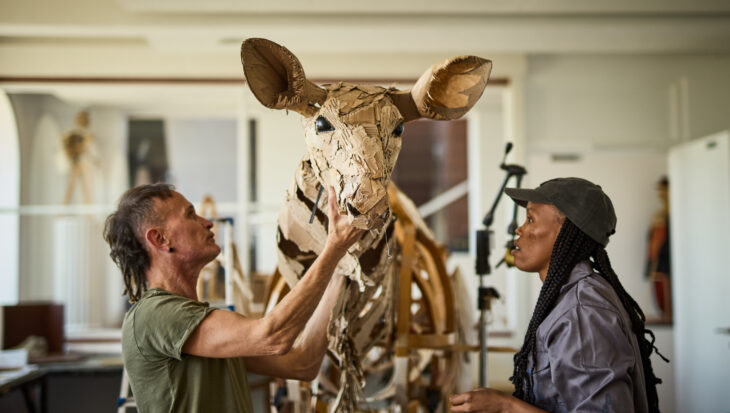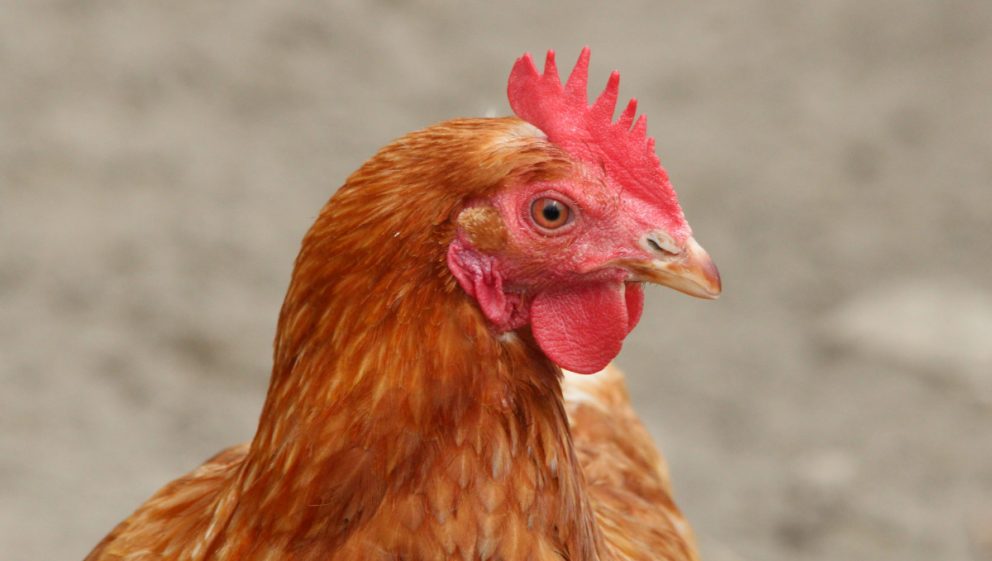‘The Herds’ will be arriving in London this Friday!
Have you heard? A breathtaking arts initiative, ‘The Herds’ will be arriving in London this Friday.
Posted 27 Jun 2025

Posted on the 4th June 2021
The foreword for Defra’s ‘Action Plan for Animal Welfare’, written by George Eustice, sounds very promising. He states that ‘The way we treat animals reflects our values and the kind of people we are’. This is true, which is why the ‘Action Plan’ should and could, go further.

We have described Defra’s ‘Action Plan’ as a missed opportunity. Many areas of animal exploitation and abuse where legislation of substance would actually mean something, have instead resulted in watered-down intentions. These include:
Snares
We called for a ban on the manufacture, sale, possession and use of snares. It is widely acknowledged that snares are both cruel and indiscriminate – they can, and do, capture animals they are set to trap – such as foxes and rabbits – but also countless unintended victims, such as badgers, lambs, hares, cats and dogs. These animals can, and do, suffer horrific injury and death. Instead of banning snares. Defra has announced a ‘call for evidence on the use of snares’ stating that the Government ‘considers it timely to open this call for evidence to make sure it has the very latest understanding on this issue’.
Animal Aid, and many other groups, contend that snares are cruel and indiscriminate and so should be banned immediately.
The government proudly announced that they ‘will legislate to end the export of live animals for fattening and slaughter’. Whilst this is a move in the right direction, this still leaves millions of animals – those exported for breeding – open to the same stresses, dangers and poor welfare standards, which an export ban (for those animals destined for fattening and slaughter) seeks to avoid. It is unacceptable to export animals for any reason – the end of live export must be comprehensive and cover all animals.
There is no mention of game bird cages in Defra’s ‘action plan’, despite the fact that tens of thousands of partridges and pheasants are used for egg production. Many birds are confined for the whole of their productive lives in cruel and oppressive metal battery cages, known as raised laying units. Numerous Animal Aid investigations have shown that these cages do not even have minimal ‘enrichment’ that is required by the governments own Code. The cages also breach aspects of the Animal Welfare Act. We are calling for a ban on these cages.
The Defra ‘Action Plan’ says the Government will ‘introduce other reforms to improve farm welfare, including examining the use of cages for laying hens and farrowing crates for pigs’. We would like to see all birds treated equally and all cages for their incarceration banned.
As stated above, the ‘Action Plan’ says the Government will ‘introduce other reforms to improve farm welfare, including examining the use of cages for laying hens and farrowing crates for pigs’. Examining the use of these crates and cages is not necessary – the evidence is clear and abundant that they should be banned.
The sows are put into ‘farrowing crates’ about a week before they give birth and are kept there for about a month afterwards. These poor animals will spend about five weeks in the farrowing crates – barren, metal and concrete cages, just a few inches longer and wider than themselves. Once in the crate the sow cannot step forwards or backwards or even turn around. Her new-born piglets are forced to suckle from a small area next to, but separate from, their mother.
Despite the claims of improved conditions, since traditional ‘battery cages’ were banned, ‘enriched cages’ provide only an additional 50cm2 of space per hen – smaller than the area of beer mat. The only ‘enrichment’ provided in these cages is a scratching area, which often consists of a small piece of Astroturf that soon becomes covered in excrement. There is also a ‘nest-box’, which may simply be a screened-off area of the cage. There is no requirement to provide any form of bedding or comfort in the nest-box, or in any part of the cage.
Many people believe that cramped and cruel cages are a thing of the past, but they are still very much a part of modern chicken farming. We are calling for all cages to be banned.
Since 2009, Animal Aid has covertly filmed inside a number of British slaughterhouses. We found evidence of lawbreaking in nearly all of them. The problems are serious and widespread. Our films revealed animals being kicked, slapped, stamped on, picked up by fleeces and ears and thrown into stunning pens. We recorded animals being improperly stunned and going to the knife while still conscious. We filmed animals deliberately and illegally beaten, pigs burned with cigarettes and workers hacking at the throats of conscious sheep
The welfare of animals at the time of their slaughter remains a matter of considerable public concern. Confidence in the government’s oversight of the sector can only have been damaged by an almost continual series of slaughterhouse undercover investigations that produced disturbing footage of ill-treatment of animals at the time they were being stunned and then killed. Against this background, the effective implementation of legal welfare standards and the monitoring and inspection of processes are essential.
Animal Aid produced an extensive report in 2016, which concluded that the current system of welfare monitoring is failing and that compulsory use of CCTV, with independent monitoring, is the only robust solution. Independent monitoring of the footage of animals being killed is the only way to stamp out outright violence and ill-treatment when animals are at their most vulnerable.
The routine mutilation of animals is done in an attempt to stop animals hurting each other, because they cannot get away from dominant animals, they are too crowded, don’t have all their basic welfare needs met and are basically being pushed to their physical and mental limit by ‘modern farming practices’.
The routine mutilation of beak trimming might stop chicken pecking each other to death; cutting piglets teeth might stop them from hurting their mother’s teats, and fighting, in desperation as she has more piglets than teats; and tail docking will remove the tails which their siblings bite in frustration. These mutilations only seek to minimise other harms to the animals, rather than providing sufficient resources so that these harms do not arise in the first place. We call for a ban on all routine mutilations of farmed animals.
It is widely recognised that there are severe welfare problems inherent in the use of high CO2concentrations to kill pigs. A 2003 report by the Farm Animal Welfare Council (FAWC, now AWC) concluded that “the use of high concentrations of CO2 to stun and kill pigs is not acceptable and we wish to see it phased out in five years”. Almost two decades later, there appears to be little movement on this issue.
A recent report by the Defra flagged that there are ‘longstanding concerns about the negative welfare impacts of high concentration carbon dioxide (CO2) stunning systems for pigs.’ And that results of a recent research project ‘demonstrate that both low atmospheric pressure stunning and CO2 stunning are associated with poor welfare in pigs and has heightened concern about the current use of high concentration CO2 in stunning pigs.’ A recent Food Standards Agency survey of slaughter methods found that 86% of pigs were stunned with high concentrations of CO2 in England and Wales, in 2018.
Have you heard? A breathtaking arts initiative, ‘The Herds’ will be arriving in London this Friday.
Posted 27 Jun 2025

As the greyhound racing industry releases its annual data on the number of dogs’ deaths, a raft of well-known names - alongside their canine friends - has called upon the Government to end greyhound racing....
Posted 26 Jun 2025
